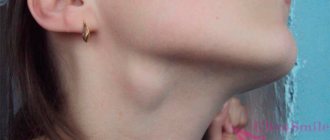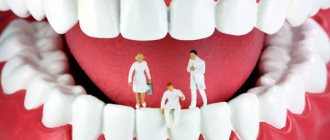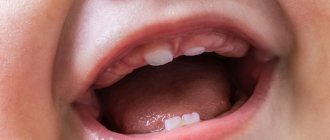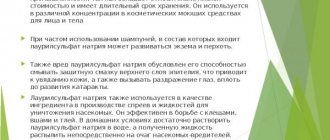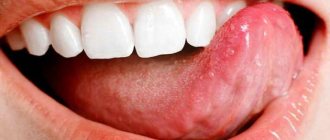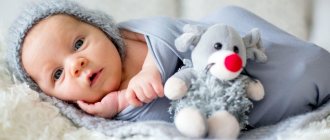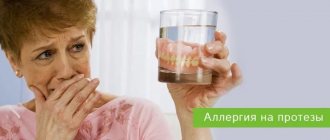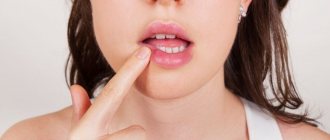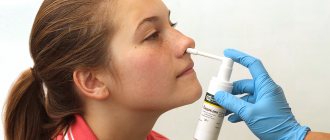Pharmacokinetics
Absorption: When applied topically to mucous membranes, lidocaine is absorbed to varying degrees, depending on the dose and site of application. The rate of perfusion in the mucosa influences absorption.
Distribution: lidocaine is distributed in well-perfused organs, incl. in the kidneys, lungs, liver, heart, and also penetrates into adipose tissue. Penetrates the placenta by passive diffusion. Distribution in the placenta may be sufficient to penetrate the fetus and reach toxic levels. Lidocaine quickly crosses the placenta, appearing in the fetal bloodstream within a few minutes of maternal use.
The binding of lidocaine to plasma proteins is largely dependent on the concentration of the drug and alpha-1-acid glycoprotein (AAG) in plasma. There are reports of lidocaine binding to proteins by 60-80%. This indicates that plasma protein binding is increased in uremic patients and renal transplant recipients and is enhanced after acute myocardial infarction. The latter is also characterized by an increase in the level of AAG. Increased protein binding may reduce the effect of free lidocaine or even cause an overall increase in drug plasma concentrations.
Metabolism: lidocaine is metabolized with the participation of microsomal liver enzymes, a decrease in alkalinity due to oxidation occurs within a few minutes. Metabolic rate is limited by hepatic blood flow and, as a result, may be impaired in patients following myocardial infarction and/or with congestive heart failure. As a result of the biotransformation of lidocaine, metabolites are formed - monoethylglycine exilidide (MEGCS) and glycine exilidide, which have significantly less pronounced antiarrhythmic activity.
Excretion: about 90% is excreted in the form of metabolites and 10% unchanged by the kidneys. Excretion of unchanged drug in urine depends in part on urine pH. Acidic urine has been reported to increase the proportion excreted in urine. The half-life (T1/2) of lidocaine is longer in patients with liver disease.
Indications for use
Lidocaine, 5% ointment is used for local anesthesia of the skin and mucous membranes of the oral cavity and perianal area
Directions for use and doses
The dose depends on the indications, the area of the anesthetized surface, the vascularity of the tissue and the individual tolerance of the patient. Use the minimum dose to achieve the desired effect. Do not use the drug for a long time
Adults and children over 12 years of age
To relieve pain - apply 1-2 g as needed
Children (up to 12 years old)
In children under 12 years of age, 100% bioavailability should be taken into account after application to mucous membranes and damaged skin, and therefore the maximum amount of Lidocaine, 5% ointment prescribed to children should not exceed 0.1 g of ointment/kg body weight (corresponding to 5 mg lidocaine/ kg body weight). The minimum interval between doses in children should be 8 hours.
Side effect
Hypersensitivity reaction in the form of skin irritation (the drug contains propylene glycol), urticaria, swelling, and in severe cases anaphylactic shock may develop.
Systemic toxicity from local anesthetics mainly includes CNS and cardiovascular side effects.
From the side of the central nervous system - restlessness, anxiety, agitation, nervousness, disorientation, confusion, paresthesia, dizziness, tinnitus, miosis, blurred vision, nausea and vomiting, convulsive contractions and muscle tremors. Insensitivity of the tongue and in the area around the mouth, absent-mindedness, irritation, depression and drowsiness, respiratory failure and coma.
From the cardiovascular system: myocardial depression, peripheral vasodilation as a result of hypertension and bradycardia; arrhythmias and cardiac arrest.
Rarely: methemoglobinemia is possible.
Permanent makeup. How to choose an anesthetic cream?
In the permanent makeup industry, application anesthesia is widely used, which can be divided into primary and secondary. Primary anesthesia is applied exclusively to intact skin during the preparation stage. The secondary one is used only after the first punctures. Choosing an anesthetic is an important task for a permanent makeup artist. Together with laser pigment removal expert Vitaly Mikryukov and Akriol Pro project manager Anna Meyendorff, the specialized magazine iColor Magazine has prepared a special material about anesthetics. Chistovye thanks its partners for the information provided.
ADVANTAGES OF APPLICATION ANESTHESIA
- The anesthetic can remain effective for up to 4 hours
- The effect of the drug occurs 10-15 minutes after application
- The anesthetic will not enter the patient’s blood, but only deep into the skin
- The anesthetic does not interfere with control of the depth of needle insertion
ATTENTION! The speed of action of the anesthetic depends on the part of the body to which it is applied, the thickness of the skin and the speed of blood flow. It makes no sense to keep lidocaine + prilocaine cream on the patient’s face for more than 30-40 minutes, since the anesthetics will begin to wash out.
SYSTEMIC TOXICITY OF APPLICATION ANESTHESIA
Despite the ease and safety of using topical anesthesia, there are contraindications to this method of pain relief. Barriers include: acute skin diseases, lactation and pregnancy, elevated body temperature, individual intolerance to the drug, open inflammation and damaged skin areas. Also, the specialist should always keep in mind that topical anesthesia can cause systemic toxicity, which is accompanied by symptoms: from trembling, muscle twitching, nausea, impaired consciousness, orientation to apnea (stopping breathing).
What increases the risk of developing symptoms of systemic toxicity?
- Elderly age
- Heart failure
- Cardiac ischemia
- Low plasma protein concentration
- Metabolic diseases
- Liver disease
- Metabolic or respiratory acidosis
- Prescribing drugs that inhibit sodium channels
All local anesthetics have a systemic effect on the central nervous and cardiovascular systems. For example, lidocaine in small concentrations increases blood pressure and has an anticonvulsant effect. However, as the dose of the drug increases, the pressure begins to drop, and the risk of developing convulsive seizures becomes possible.
EXPERT OPINION
“An allergic reaction can occur to absolutely any ingredient in an anesthetic, so when choosing an anesthetic, preference should be given to drugs that have been registered in the Russian Federation. These products include EMLA and ACRIOL PRO. Both drugs have the same composition – 2.5% prilocaine and 2.5% lidocaine, which is the optimal ratio,” says Vitaly Mikryukov.
HOW TO CHOOSE AN ANESTHETIC?
PRIMARY ANESTHESIA Primary anesthesia drugs are available in the form of a cream, emulsion or gel. The main active ingredient is lidocaine. When choosing an anesthetic, pay attention to the fact that the lidocaine content in the composition is no higher than 5-6%, since exceeding this value will make the skin harder. Most masters use products with a lidocaine concentration of up to 10%, which is acceptable.
SECONDARY ANESTHESIA Secondary anesthesia preparations must have a liquid consistency. The watery structure of the anesthetic makes it easier for the anesthetic components to penetrate deep into the skin and provide instant “freezing”. A good indicator would be the content of vasoconstrictor substances. They reduce lymph production, which has a positive effect on the distribution of pigment in the skin. To select the optimal anesthetic, you should take into account the area and technique of applying permanent makeup. When working in the eyebrow area, it is better to use water-based anesthetic creams and gels. The liquid consistency of the drug will ensure deep penetration of the anesthetic into the layers of the skin. To work with the upper eyelid, preference should be given to anesthetic agents with a thick texture. They are more suitable for this delicate area, as they do not spread and do not get into the eyes.
INGREDIENTS IN ANESTHETICS How do popular ingredients in local anesthetics work?
Lidocaine
It forms the basis of almost all anesthetic creams. Rarely causes allergic reactions, acts quickly and for a long time, does not cause local irritation, is well absorbed and dilates blood vessels. Not recommended for patients with liver disease, as well as for patients using beta-blockers due to the risk of developing hypotension.
Prilocaine
Unlike lidocaine, it has less analgesic effect. Rarely causes allergies, low toxicity. In case of overdose (more than 400 mg at a time), it can increase methemoglobin in the blood. As part of anesthetic creams in the Russian Federation, it is registered only in combination products with lidocaine.
Benzocaine (Anestezin)
It has minimal absorption and is suitable for use on mucous membranes. Insoluble in water. For superficial anesthesia, it is used in the form of a 5-20% oil or glycerin solution, 5-10% ointment. There are no registered drugs with benzocaine for skin pain relief in Russia.
Novocaine
Once in the body, it is hydrolyzed into diethylaminoethanol and para-aminobenzoic acid. Because of this, it often causes allergies. It has low toxicity and is contraindicated in patients with anemia and liver diseases. Intoxication is expressed in nausea, decreased blood pressure, and dizziness. The effect is short-lived and weak – 15-20 minutes. The product does not have a registered indication for superficial anesthesia.
Tetracaine
Highly effective local anesthetic from the ester group. It is often used for tattooing the eyelids, since when it comes into contact with the mucous membrane of the eye, it does not affect intraocular pressure. It is highly toxic (2 times more than cocaine, 10 times more than novocaine). Due to its vasodilatory properties, it is supplemented with vasoconstrictors to reduce the risk of intoxication. Not a single solution of tetracaine is registered in the Russian Federation.
Epinephrine
Epinephrine constricts blood vessels, making the master’s work bloodless. Also, it has an antiallergic effect.
Adrenalin
Adrenaline is added to anesthetics to prolong the effect. It causes vasospasm, due to which the anesthetic is carried more slowly by the bloodstream. The substance is already present in the body, so it does not cause allergies.
IS IT POSSIBLE TO MAKE ANESTHETIC DRUGS YOURSELF?
Recently, the practice of independently producing anesthetic preparations for the permanent makeup procedure from ingredients available for purchase in pharmacies has begun to gain popularity among permanent makeup artists. Experts strongly recommend refraining from such an initiative due to the risk of harm to the client. In the conditions of “non-pharmaceutical” production, it is impossible to fully comply with all the subtleties of manufacturing: the accuracy of the formulation, the quality of mixing, and sterility. Use only certified products for work!
EXPERT OPINION
Interview with the head of the Akriol Pro project, Anna Meyendorff.
How do you feel about the fact that beauty industry professionals make their own anesthetic cocktails from ingredients purchased at the pharmacy?
Anna:
Extremely negative, because now even dermatologists, who are well versed in skin problems, are moving away from prescription production towards industrially produced drugs in pharmaceutical factories, since there they can maintain precise dosage, good mixing of ingredients, as well as aseptic and antiseptic rules .
How dangerous is adrenaline in its pure form as an anesthetic?
Anna:
Adrenaline added in therapeutic doses promotes greater vasoconstriction, which means it can increase the duration of action of the drug and reduce its systemic toxicity. It began to be added to local anesthetics at the beginning of the 20th century. Most local anesthetics also have a vasoconstrictor effect, and the addition of epinephrine may not greatly affect the effect. In addition, when using anesthetics registered as cosmetics, you cannot always count on the fact that they contain adrenaline, even if it is indicated on the box.
What ingredients should be included in a numbing cream?
Anna:
The composition of the anesthetic cream should be as pure as possible: without preservatives and ether anesthetics that increase the risk of developing allergies (novocaine, tetracaine, benzocaine). An example of the composition of an anesthetic cream per 100 g: lidocaine - 2.5 g, prilocaine - 2.5 g; PEG-54 hydrogenated castor oil – 1.9 g; carbomer – 1.0 g; sodium hydroxide – 0.52 g; purified water – up to 100 g.
Why is lidocaine 2.5% + prilocaine 2.5% emulsion considered the standard in skin anesthesia?
Anna:
Lidocaine and prilocaine enhance each other's effects. When the concentration increases above 5%, the power does not increase, and the risk of developing toxic reactions increases. Clinical trials have proven that the emulsion lidocaine + prilocaine 5% anesthetizes 2 times better than single-component lidocaine, even at a concentration of 40%. In the lidocaine + prilocaine emulsion, the concentration of anesthetics in each fat drop reaches 80%. It is important that the ratio of lidocaine and prilocaine should be 1:1.
The absence of pain and discomfort during an appointment with a permanent makeup artist is 50% of the success of the work result. Relief of pain with the help of anesthesia is mandatory when applying tattooing to the lips and eyelids, because these parts of the face belong to hypersensitive areas. Eyebrow tattooing is not such a painful procedure, therefore, at the request of the client, it can be performed without the use of anesthetics. In this case, the master must take into account that a sudden wince of the client can negatively affect the result of the work.
What is anesthesia used for in pediatrics?
Until now, in the views of specialists and parents of young patients, there are still quite a lot of myths about how children perceive and experience pain.
Among such misconceptions one can find the following conclusions: children do not perceive pain the same way as adults; children do not remember the pain they experienced previously; children always tell adults when they are in pain; children always perceive pain in the same way; It is useful for children to endure pain, as it helps build character and willpower; pain relief leads to psychological dependence in the child, etc. Recent studies have shown that the younger the child, the more acutely he experiences pain, but, unfortunately, he cannot always report this21.
Pain is one of the earliest developing psychophysical functions associated with the most “ancient” structures of the brain. By 30 weeks of fetal development, all pathways for conducting and perceiving pain have already been formed. From this time on, the child perceives pain, and its intensity is often even greater than in adults.
However, the subjective nature of pain makes it a difficult concept to measure. This is especially true for those who find it difficult to express their pain in words. As a result, according to the researchers, until the early 1980s, pain in newborns was rarely treated adequately, because It was assumed that due to the immature nervous system, infants are practically unfamiliar with pain. The work of Anand et al showed that in premature newborns after surgery with conventional minimal anesthesia, stronger reactions occurred (increased concentrations of catecholamines, glucagon, corticosteroids), they experienced more postoperative complications, and higher mortality compared to the group of newborns who received complete anesthesia . McCrath and Unruh showed that the immaturity of newborns relates not to their ability to experience pain, but to the exceptionality of their inability to signal it to adults.
Currently available evidence allows professionals to urge the provision of pain management to children of all ages, if only because all human beings have the right to adequate pain control, whether they can report it or not.
It is also worth considering that the general perception of treatment and illness by an adult patient and a child is different. An adult is able to appreciate the benefits of treatment procedures and medical manipulations and positively perceive the treatment situation and medical personnel, despite the pain and discomfort experienced. A child’s thinking (up to approximately early adolescence) is concrete, visual, and more fragmented. Thus, a large randomized study showed that children of almost all ages consider needles and the procedures associated with their use to be the most frightening and painful component of a visit to the doctor.
Due to the deficit of semantic regulation, emotions and sensations play a large role in assessing the situation and adapting to it.
Therefore, therapeutic and preventive medical procedures associated with painful sensations or diseases accompanied by pain are often associated in children with punishment and violence. Children often feel guilty for their own poor health, regarding this as a manifestation of their own “badness.” Even children who cannot yet speak remember very well all the details of painful procedures and events. When the procedure is repeated, they experience an increase in the “stress” reaction already at the time of treating the skin before the procedure. Negative experiences can intensify the pain response time after time, like a snowball, determining the child’s further response to painful stimuli.
Memory forces the body to avoid those situations that, thanks to the experience of pain, have acquired the meaning of “dangerous” in the child’s life. If this pain is the result of medical procedures, treatment, or illness, then such avoidance is called “medical PTSD syndrome.” A well-known manifestation of this disorder is “needle phobia,” familiar to many adults.
Despite the fact that pain has a signaling function, indicating a problem, damage in the body, mobilizing the body's reserve forces to ensure the reaction of flight and defense, its “positive” meaning is often extremely exaggerated. Pain calls for help and treatment. From a psychological point of view, enduring pain is not only useless, but also harmful.
Pain worsens the quality of life (perception of opportunities and fullness of life) of children of different ages and with various diseases, and in cases of various medical procedures. Thus, in adolescents with arthritis, high levels of pain led to a decrease in quality of life indicators such as physical, emotional and social functioning. Children with chronic abdominal pain of nonorganic origin, as well as children with gastroisophagitis or inflammatory bowel disease accompanied by pain, experience a decrease in quality of life in all respects compared to healthy peers. Pain has pronounced negative effects: both short-term and delayed.
Some authors, depending on the severity of the reaction and the duration of the consequences in response to medical situations and diseases accompanied by various pains, divide acute stress disorder (OST) and post-traumatic stress disorder (PTSD). The first (OST) is characterized predominantly by dissociation, avoidant behavior, anxiety and excitability, obsessive repetition of experiences, symptoms last from 2 days to 4 weeks and gradually fade away. The second (PTSD) is also characterized by repetition of the experience, avoidant behavior, and increased excitability, but the symptoms last for at least one month. According to ICD-10 and DSM-IV, post-traumatic stress disorder is classified as an anxiety disorder. Depending on age, the ability to cope with traumatic pain experiences, the characteristics of medical situations, children’s reactions may be different. Infants and young children show signs of regressive behavior, whining, enuresis, loss of newly acquired skills, loss of speech, difficulty falling asleep or waking up at night. Children of preschool age strive to reproduce their experiences in games; along with this, difficulties in falling asleep and nightmares, a decrease in speech activity, increased separation anxiety (when parting with loved ones), as well as fears, for example, fear of the dark, may also appear. Children of primary school age demonstrate nightmares, fixation on a traumatic event, obsessive repetitions, various psychosomatic reactions, overexcitation, inappropriate emotional reactions, fears, avoidant behavior, and aggressive attacks. In adulthood, a desire for greater independence may appear - early sexual relations, the desire to leave home - or, conversely, an age-inappropriate increase in dependence. Deviant behavior and use of psychoactive substances are also possible. Teenagers are more likely to experience feelings of guilt and intrusive memories than younger children.
At any age, a child, faced with the experience of pain, often loses interest in ordinary activities, his self-esteem decreases, and his prospects for the future are often lost. Such experiences can upset relationships with loved ones and friends, especially if the pain is associated with life-saving procedures or a serious illness, or violence.
In turn, the consequences of PTSD can lead to disruption of the child’s adaptation at school, usual life and environment. Different types of traumatic situations associated with painful experiences in children were compared: type I traumatic situations associated with sudden events (fire, accidents with injuries, various medical procedures) and type II situations associated with prolonged exposure to an unpleasant event (cancer disease, organ transplantation). ). Both cases were characterized by avoidant behavior in children, increased anxiety, and repetition of situations. For children with type I trauma, complete detailed memorization of the situation, the development of premonitions, and impaired perception of reality were more typical, while children with type II trauma demonstrated greater denial of the situation, dissociation, and lack of feelings or problems. In response to medical procedures, both type I responses can develop (if the procedures involve dangerous interventions) and type II (if more painful procedures are repeated many times, and the treatment itself is lengthy and aggressive).
The various psychological consequences of pain experience in children are analyzed depending on the experience and the context of various diseases. The painful experience associated with burns often provokes nightmares, enuresis, and phobias in children for a year or even more after the accident. Painful experience associated with injuries and car accidents leads to the fact that children are worse at differentiating fear, whether it is associated with the accident itself or with painful procedures during treatment. Replaying of traumatic situations, reproducing the situation in dreams, and avoidant behavior were noted.
In response to surgery, which is accompanied by painful experiences, more than 80% of children and their families experience acute stress. Such trauma provokes fears, depression, and generalized anxiety. One in five children develop post-traumatic stress disorder that lasts more than 4 months and manifests itself in everyday life. Much of this stress is triggered by the level of pain experienced during illness and treatment. More severe early stress (acute stress reaction) in children and parents may help prevent the development of post-traumatic stress in children. Particular attention is paid to the influence of pain in children with cancer. Increased severity of PTSD symptoms, compared with other conditions, is associated with length of treatment, painful interventions, and intensity of treatment. Especially in young children, the association of PTSD with subjective treatment measures increased.
Data from the US Center for Pediatric Traumatic Stress (Philadelphia) also confirm that the experience of pain in children can have significant negative short-term and long-term psychological and social consequences . Among the psychological consequences in adult life are: chronic pain disorder, anxiety, various phobias, hypochondriacal personality development, panic attacks. Among the social ones are reactions of avoidant and evasive behavior from new and unfamiliar situations, which significantly reduce the level of social adaptation. Significant social and emotional problems in the case of pain in childhood are experienced not only by children, but also by their parents.
Some chronic and acute diseases of children, accompanied by pain, unfortunately, end in death. In such cases, the fact that the child suffered less and suffered less pain before death can be crucial for the family in terms of rehabilitation and coping with the loss of the child. Reducing pain experiences reduces the severity of medical stress in children and their families (...).
Currently, to control pain of various origins, special protocols for pain assessment and treatment have been developed and continue to be developed. Their main component is the use of various medicinal methods of pain relief (..). To control pain in children, non-pharmacological and psychotherapeutic methods of assistance are also used.
In some cases, these methods can be carried out by parents and medical staff (and sometimes by the children themselves), specially trained in special techniques; in others, by experienced psychologists and psychotherapists. One of the groups of such methods is associated with the creation of a special environment in which medical manipulations with a child take place, accompanied by pain. Typically, step-by-step information is used to inform the young patient and parent about what will happen during the procedure, what the child will see and hear. At the same time, it is recommended to avoid incomprehensible medical terms, highly disturbing and emotionally charged words, and not to try to convince that the procedure will be absolutely painless. The use of jokes, clear commands, praising the child, reading books describing the procedure, and sincere and open communication have a positive impact during the procedures. Additional comfort for children can be created due to the appearance of the room where procedures and manipulations are carried out, where toys or a cute blanket are placed, walls are painted and pictures are hung. It is also useful to include the smallest patient in the procedure: the child can be asked, for example, to count down the time until the end of certain stages of the procedure or to hold some medical instrument; It is important to give the child a sense of freedom, for example, by choosing a particular bandage, deciding which hand to take the test from, etc. If a child is hospitalized and undergoing treatment in a hospital, it is not recommended to carry out procedures in the ward, on his crib. It is better to use a special room for manipulations in order to maintain the child’s feeling of safety at least in his room. It is important to respect its boundaries, emphasized by the presence of a schedule of procedures and activities, accompanying rounds with a preliminary knock on the door of the ward where the child is.
Parents who remain with them can reduce pain and distress in children; they can also learn from them what may be stressful for their child in the procedure and what can help them better cope with the situation. However, it is important not to ask parents to restrain the child, to instruct parents not to threaten the child with additional injections, but, on the contrary, to set them the task of behaving in such a way as to help “hold back” the pain. To achieve this, various methods of distracting the child during the procedure in different ways are widely used, depending on the child’s age, hobbies and interests. Distracting conversations (about school, hobbies) are always available. For infants, physical contact between mother and baby, for example, pressing him to the mother's breast, is often used as a distraction during the procedure. Tactile distraction is also used with older children: using pressure on some point of the body, stroking, patting.
Among the recommendations for similar control of pain in children for medical personnel are the following: conduct activities in a calm and friendly atmosphere; be confident and avoid apologies, excuses, criticism; avoid conversations with colleagues, parents, students (especially about side effects of the procedure); try to avoid stressful influences (sharp sounds); Do not play it safe during procedures. For this purpose, special trainings and seminars are organized for staff.
Cognitive (behavioral) psychotherapy can be used to combat post-traumatic stress syndrome To prevent and treat medical stress, it is proposed to provide information to children and parents of the patient about the disease, the causes of pain and painful procedures; early diagnosis of pain response; raising the level of awareness of specialists themselves, including on the problems of children experiencing pain and ensuring pain management.
Thus, it becomes obvious that the problem of pain in pediatrics currently occupies a special place. Childhood experiences can make a person more or less susceptible to pain. Lack of pain relief and pain treatment can have serious negative consequences for the development of a harmonious and well-adjusted personality, as well as the establishment of a doctor-patient partnership in adult life21.
Symptoms of teething in children
Typically, when teething, the following symptoms are observed:
- excessive salivation, which can cause the baby to cough, possible hoarseness, a rash around the mouth and on the chin;
- soreness and swelling of the gums;
- itching of the gums (the child puts various objects in his mouth to “scratch” the gums);
- deterioration of appetite or its complete absence;
- increased body temperature;
- sleep problems;
- increased excitability, tearfulness;
- runny nose;
- stool disorder.
It is important to note that not all children have all the symptoms on this list. These may be several symptoms of teething, or even none at all. Everything is very individual.
How children cut teeth
Kamistad Baby
This German gel contains two main components: chamomile (disinfects, soothes and relieves inflammation) and polidocanol (a local anesthetic that is as safe as possible for the child’s body). “Kamistad Baby” has a sweetish-honey taste, so the baby will definitely not spit it out. The product is packaged in a convenient tube with a thin dispenser spout, so the gel is easy to apply to children's gums. Literally immediately after application, the drug begins to work, relieving pain, and the effect lasts for several hours. In addition to teething in babies, Kamistad Baby is prescribed for stomatitis and gingivitis in adults, for healing erosions in the oral cavity, after surgical procedures.
Kamistad Baby
STADA CIS, Russia
Kamistad® Baby is recommended at the first signs of teething in children.
from 273
260
- Like
- Write a review
Dentinale
This teething gel helps babies get through the difficult period easier. Dentinale contains only safe ingredients, no chemical painkillers. The drug contains chamomile extract, aloe vera juice and boswellia. Dentinale reduces gum sensitivity, relieves inflammation and provides excellent pain relief. After applying the gel, a protective film is formed on the gums, so the child calms down and falls asleep. The drug can be applied many times, and the effect lasts for several hours. Dentinale does not contain sugar, parabens, or lidocaine. The gel has a sweetish, pleasant taste that your baby will definitely like. Dentinale can be used even by children prone to allergies.
Baby Doctor First teeth
This Israeli teething gel contains plantain, marshmallow root, chamomile, calendula, and echinacea. This is an ideal drug for both infants and older children. “Baby Doctor First Teeth” quickly relieves inflammation of the gums, the drug is completely natural and hypoallergenic. The gel contains no anesthetics, so it is suitable for children. The product provides long-term relief from pain, itching and inflammation. It is also important that you can use “Baby Doctor First Teeth” as much as necessary per day. Many pediatricians and parents speak only positively about the drug.
Baby Doctor First teeth
Baby Doctor gel for gums First teeth is a transparent pinkish gel, tasteless and odorless.
The gel instantly soothes the gums and eliminates inflammation. With regular use of the gel, the teething period of an infant is greatly facilitated and the occurrence of complications is eliminated. from 297
5.0 1 review
3
- Like
- Write a review
Teething by age
Kalgel
You can buy "Kalgel" only with a doctor's prescription, since this drug contains a powerful anesthetic - lidocaine, and it should be used with caution in small children, an overdose is dangerous. "Kalgel" is prescribed in difficult cases of teething in children, when weaker drugs do not have an effect. The gel also contains cetylpyridinium chloride - it disinfects and relieves inflammation due to bacterial infection. Kalgel has a powerful and long-lasting effect, but it is very important to observe the frequency of use and dosage.
Kalgel
GlaxoSmithKline, France
- for quick relief of pain during teething and reduce the severity of gum irritation.
The drug Kalgel also has a weak antiseptic effect. from 260
514
- Like
- Write a review
How to make teething easier for children.
Wednesday, December 15
1103
5
1
Content
- Symptoms of teething in children
- Top 7 pain-relieving gels for teething
- Kamistad Baby
- Dentinale
- Holisal
- Baby Doctor First teeth
- Kalgel
- Pansoral
- Dentinox
A baby’s first teeth are always a great joy for parents, but often this is accompanied by a deterioration in the child’s well-being, fever, moodiness and bad mood. Only 30% of young children do not have any negative symptoms when teething. In pharmacies you can buy various drugs to improve the condition of a child during teething: both drugs for oral administration and for external use. Today we’ll talk about gels for gums.
Many parents buy such products on the advice of friends or based on reviews from moms on forums. But it is better to consult a pediatrician before purchasing a painkiller, because only a doctor can take into account all the individual characteristics of your baby’s body and choose a truly effective and safe remedy.
Read also Top 10 best hypoallergenic formulas for children 10 best infant formulas for children with allergies.
Pansoral
This is a French phytogel for children's gums, the quality and safety of which are confirmed by international certificates. "Pansoral" relieves inflammation and slightly numbs the baby's gums. Thanks to the rapid penetration of active substances into the mucous membrane, the pain subsides in just two minutes. The preparation contains chamomile and saffron flowers, an extract from marshmallow roots. These components are excellent antiseptics; they heal and disinfect well. Gel "Pansoral" can be used in children from 3 months of age, it is completely natural. The drug is also indicated for the healing of ulcers on the mucous membrane, stomatitis, and bacterial rashes in the oral cavity. It is advisable to consult a pediatrician before using the drug. Among the disadvantages of the product is that it is not available in all pharmacies, it can cause an allergic reaction.
Pansoral
Pierre Fabre Medicament, France
Pansoral is a natural herbal remedy that is used to ease teething in children.
The plant extracts included in the preparation have a calming and softening effect on the gum mucosa. The plant extracts included in the preparation have a calming and softening effect on the mucous membrane of the gums and help the child endure this period easier. from 280
413
- Like
- Write a review
